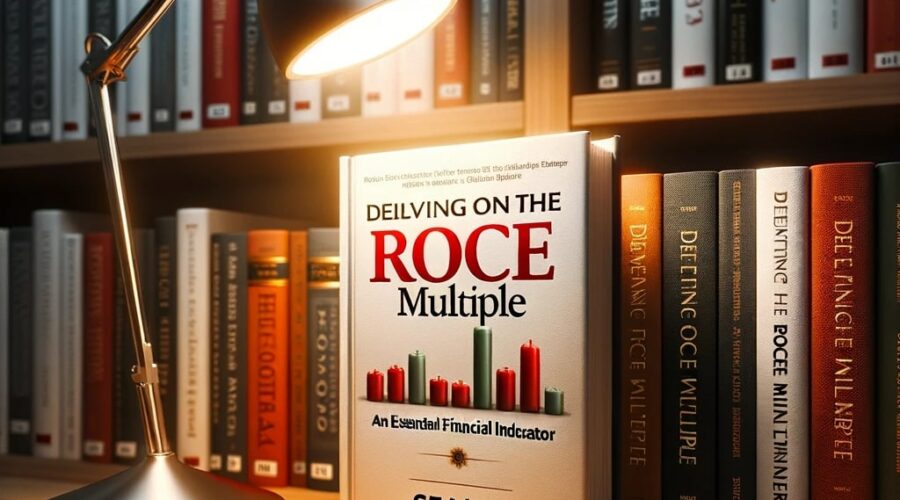Unravelling The Power Of ROCE Multiple: A Guide For Equity Investors
The ROCE (Return on Capital Employed) multiple is an increasingly recognized financial measure that provides a nuanced understanding of a company's profitability.



worked for numerous big names in the sector, including Fidelity Investment, Allianz Global Investor, Union Investment, Kepler Cheuvreux.
Gaining rapid traction among financial analysts and investors offers a deep and meticulous analysis of a company’s profitability potential. This financial metric is calculated by taking the company’s market valuation and dividing it by its ROCE. The ROCE, in turn, is extracted by dividing the earnings before interest and taxes (EBIT) by the company’s capital employed. This capital employed captures the company’s debt and equity, thus laying bare the intricacies of its financial health, enabling stakeholders to make informed decisions.
For discerning investors, the ROCE multiple serves as an invaluable analytical tool. It provides a holistic view of a company’s financial performance, transcending the reach of conventional metrics like earnings per share (EPS) or the price-to-earnings (P/E) ratio. By focusing on the effectiveness of a company’s capital investments, the ROCE multiple facilitates the identification of companies that demonstrate exceptional return capabilities. Consequently, this tool significantly enhances the likelihood of securing consistent and long-term financial gains.
It’s paramount for investors to familiarize themselves with certain limitations tied to the ROCE multiple. Notably, the multiple requires careful assessment of a company’s projected growth trajectory. Furthermore, it necessitates meticulous scrutiny of the company’s capital configuration and associated debt costs. This could lead to potential misalignments when contrasting businesses from distinct sectors or those sporting diverse capital frameworks.
To truly harness the ROCE multiple’s power, one must deeply dive into its historical track record coupled with global benchmarks. For instance, over the past ten years, the S&P 500 index in the United States has observed an average ROCE multiple hovering between the 2.5 and 4.5 marks. Tech behemoths like Microsoft (18.5), Amazon (9.9), and Alphabet (8.4) have consistently showcased impressive ROCE multiples.
Shifting focus to Europe, the Euro Stoxx 50 index has displayed an average ROCE multiple between 1.5 and 3.5 throughout the same period. Powerhouse corporations such as SAP (12.2), Nestle (7.3), and L’Oreal (6.8) have emerged as notable players with elevated ROCE multiples.
Concurrently, in the vast Asian market, the MSCI Asia ex-Japan index’s ROCE multiple has ranged between 2.5 and 4.5 over the preceding decade. Industry leaders like Tencent (10.1), Alibaba (8.7), and Samsung (6.7) have solidified their positions with remarkable ROCE multiples.
The ROCE multiple’s undeniable prowess can only be harnessed once its intricate calculation process is thoroughly understood.
Firstly, ascertain the company’s ROCE by dividing its EBIT by the total capital employed, including debt and equity. Subsequently, to derive the ROCE multiple, divide the company’s market capitalization by its previously calculated ROCE.
Consider, for example, a fictitious enterprise named ABC Corp. with an EBIT of $2 million, a debt load of $5 million, and equity worth $7 million. The computation for ROCE would unfold as follows:
ROCE = EBIT / (Debt + Equity) = $2m / ($5m + $7m) = 20%
Given ABC Corp.’s market capitalization stands at $20 million, the resulting ROCE multiple would be:
ROCE Multiple = Market Cap / ROCE = $20m / 20% = 100
When employed judiciously, the ROCE multiple emerges as a premier tool spotlighting companies adept at deriving significant profits from their capital allocations. By juxtaposing it with traditional earnings-centric metrics, the ROCE multiple unravels the core profitability dynamics of enterprises.
Nevertheless, potential pitfalls warrant attention. The ROCE multiple, for instance, operates under the assumption that a company’s growth prospects and present-day profitability will be sustained. Additionally, it might gloss over the nuances of a company’s capital composition, which could differ significantly across industries and companies.
A thorough examination of the historical ebbs and flows in the ROCE multiple can offer investors unparalleled insights. For instance, over the previous decade, the S&P 500 index in the USA has oscillated between 2.5 and 4.5. This highlights the economic cyclical shifts and variances in capital efficiencies among diverse companies.
The utility of the ROCE multiple is universal, not tethered to any specific geographical locale. Its global relevance is evident as its values have fluctuated between 1.5 and 3.5 in the Euro Stoxx 50 index and 2.5 and 4.5 in the MSCI Asia ex-Japan index over the last ten years. Such global variations underline the imperative of mastering the nuances of the ROCE multiple across different economic landscapes.
In conclusion, while the ROCE multiple might present certain challenges, its stature as a formidable instrument for investors remains uncontested. A profound grasp of its underlying mechanics, historical trajectories, and global variations can empower equity investors. By leveraging the ROCE multiple, they stand poised to make strategic investment choices, potentially culminating in enhanced financial dividends.
(c) seat11a – Publicly Listed Companies: Elevator Pitch, Deep-Dive, Financial Results, and ESG
Unlock the insights of top publicly listed companies with seat11a.com
Elevate your understanding with powerful Elevator Pitches, Deep-Dive Presentations, and in-depth Financial Analysis